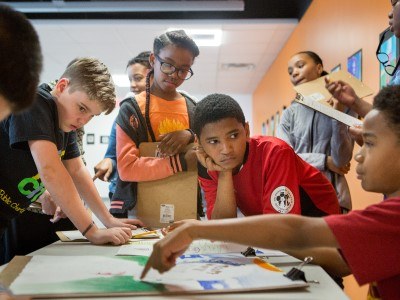Why Schools Need to Change
MyWays: The Three Steps Needed to Achieve the Big Leap into Next Gen Learning
Topics
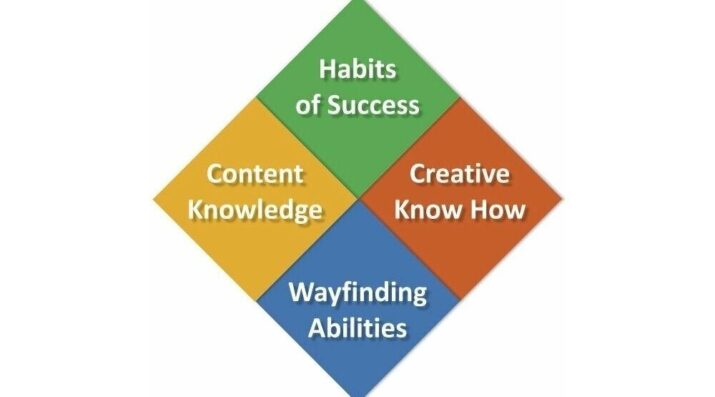
Today’s learners face an uncertain present and a rapidly changing future that demand far different skills and knowledge than were needed in the 20th century. We also know so much more about enabling deep, powerful learning than we ever did before. Our collective future depends on how well young people prepare for the challenges and opportunities of 21st-century life.
Practitioner's Guide to Next Gen Learning
Part 1: Re-examining and Fine-Tuning Your Definition of Student Success
Editor's Note: Updated materials available! Visit myways.nextgenlearning.org for the most up-to-date information and tools from the NGLC MyWays project.
This is the first blog in a series on MyWays. Part 2 addresses learning design and Part 3 focuses on assessment design. The toolbox of MyWays resources is in beta form, available for pilot-testing. These resources will be refined and new tools will be added, based on user feedback, later this spring, along with a summary of the research supporting the MyWays project.
How would you answer these three questions? Just as important: how would your staff and colleagues answer them, and how much agreement would there be in their answers?
- How well are we defining and articulating what success looks like for students attending our school?
- How well does our design for learning and the organization of our school directly support students' attainment of that richer, deeper definition of success?
- How do we gauge students' progress in developing those competencies? And: How can we measure and articulate our school’s overall performance in helping all of our students achieve our definition of success in full?
For schools reflecting principles of next generation learning—personalized, student-centered, competency-based, blended, experiential, designed around deeper learning goals—developing and activating strong, clear answers to these questions is an imperative. With the assistance of the primary MyWays researchers and authors, Dave Lash and Dr. Grace Belfiore, NGLC has been incubating a project for the past 18 months intended to help our grantees and all educators entering this space to do exactly that.
Whether you are already engaged in designing or implementing next gen learning, or considering it (in part enabled by the new Every Student Succeeds Act), we hope you will use the MyWays tools as “critical-friend” analytical lenses to examine the depth and clarity of your answers to the three Big Questions of Next Gen Learning. This first blog introduces the research and framework we have produced to help you and your colleagues address the first question; blogs 2 and 3, to be published later this week, will focus on the others.
Exercise 1: Fine-Tuning Your Definition of Student Success
We all recognize that in the 21st century, a high school diploma needs to represent much more than proficiency on state ELA and math tests, required course-taking, and the requisite seat-time. Most, if not all, NGLC grantees have developed thoughtful expressions of what their school graduates should know and be able to do before advancing into high school or beyond, to college or another form of postsecondary education, in some cases job-embedded. There is increasing consensus nationally on the need for deeper, richer definitions of student success and there has been good work done on this issue, with more good work emerging every day.
And therein lies the rub. How are educators and policymakers (not to mention parents and students) to make meaning out of all of this illuminating but confusing tower of babel? For school leaders seeking to craft or fine-tune their own definitions of success, where can they find a dashboard that encompasses and correlates the major emerging frameworks and offers a concise distillation?
The Basis for the Success Definition Exercise
The MyWays Framework: A Distillation and Synthesis of Current Research
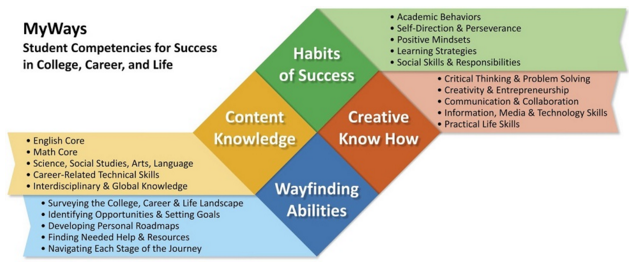
MyWays’ 20 competencies are grouped in four “arenas”:
- Content Knowledge: subject area knowledge and organizing concepts essential for academic and real-life applications
- Creative Know-How: skills and abilities to analyze complex problems and construct solutions in real-life situations
- Habits of Success: behaviors and practices that enable students to own their learning and cultivate personal effectiveness
- Wayfinding Abilities: knowledge and capacity to successfully navigate college, career, and life opportunities and choices
Think about learning to drive a car. You need to develop the content knowledge to understand the rules of the road, what the floor pedals do, and what the dashboard is telling you; the creative know-how to apply that knowledge and to pilot a car proficiently; the habits of success essential to being a safe, aware driver; and the wayfinding abilities required to navigate to your desired destination.
There is a false dichotomy to be wary of, here: the first two MyWays arenas do not comprise the “cognitive,” “hard,” or “academic” skills and the second two do not comprise the “non-cognitive,” “soft,” or “social/emotional” skills. In our view, students’ development of the competencies across each of the arenas happens in holistic, inter-related and -dependent ways, and involves increased degrees of mastery in capability and agency. In fact, we define competence in any pursuit as the union of capability and agency, as we interpret both terms below.
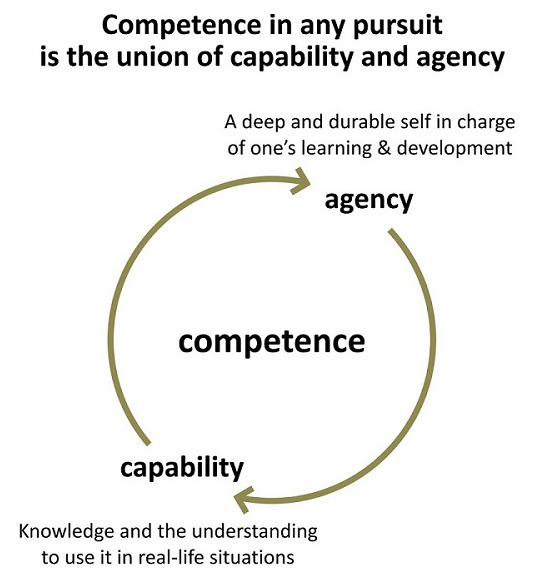
This framework represents the analysis and synthesis our MyWays team of researchers has conducted over the past year and a half, drawing from more than 20 major frameworks and at last count, more than 150 papers and research studies. Our goal with MyWays is not to replace or compete with the other frameworks that shaped it, by any means. We seek to establish a universal translator for them—a Rosetta Stone of competency definition—to surface the commonalities among these frameworks, increase their interoperability, and maximize their usefulness and impact in the field. All of the MyWays constructs, tools, and resources are being made freely available under Creative Commons licensing that allows for local customization.
Strong or Partial Alignment with Major Frameworks (seven shown here)
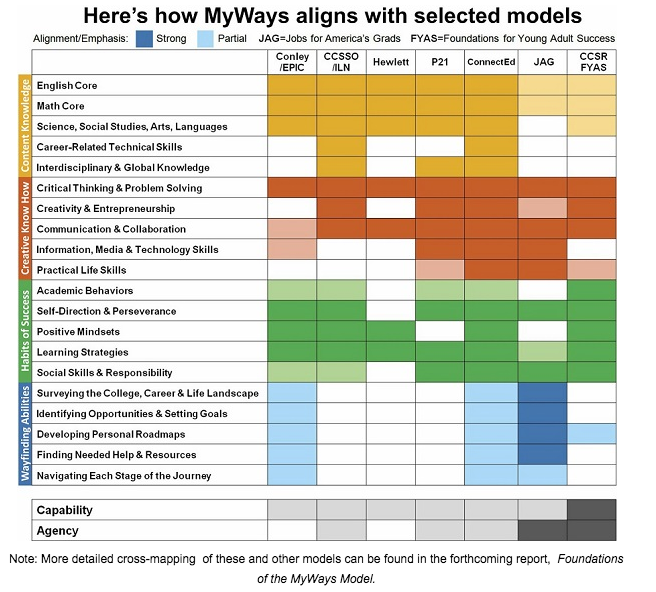
The Tools for the Success Definition Exercises
In the MyWays Beta Toolbox, you will find the first portion of the MyWays Three-Big-Questions Exercise Set. There are two exercises and tools designed for your use in engaging with staff, board, and others around your school’s definition of student success—the first Big Question. Those exercises are presented in the slide deck; in addition, there are tools provided as separate docs and the Introducing MyWays overview.
Exercise 1a: Defining and Mapping Your Definition of Student Success. Use this worksheet to spark a rich discussion with staff about your school’s current definition and how it maps with the MyWays framework, distilled from more than 20 major models. You can either print out the worksheet for team members to fill out in hard copy; have them complete the form digitally using the Excel template; or load the template into a Google doc for the team to add their responses within a single collaborative space.
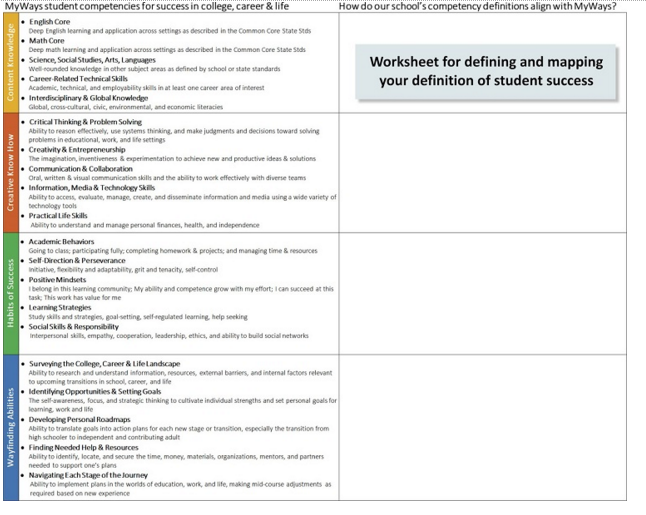
Exercise 1b: Creating a Graphical Learning Plan for Student Success. Use this simple Excel tool, provided in the Toolbox, to create a spider-chart graphical expression of an individual student’s current strengths, needs, and goals across the full set of MyWays competencies (or replace them with your own definitions). You can customize this Excel charting tool as you see fit.
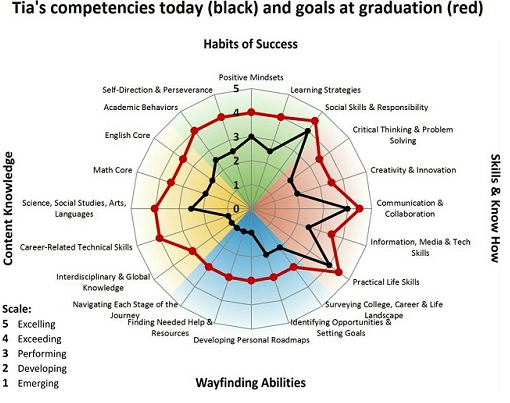
Learn more about the MyWays competency framework by reading the Introducing MyWays overview in the Toolbox; much more background is forthcoming when further resources are released.
If you’ve achieved consensus around a clear definition of student success with your staff, but have more work to do with your larger parent/governance communities, try this at your next gathering: for five minutes, ask everyone to shout out the skills students will need to develop in order to thrive in the 21st century. You’ll wind up with a set of competencies that should lead you straight into discussion of the MyWays framework and/or of your school’s definition of success. In that respect, MyWays simply reflects what most everyone instinctively already knows.
Exercise 2: A Learning Model as Rich as Your Definition of Student Success. Strong consensus about the competency goal-line among your staff is the essential first step. Now for the hard part: does your learning model and school organizational design actively, directly, and fully support that definition of success? Tools to help your team probe and refine your answer to this second Big Question are featured in an upcoming blog post. A third blog post will focus on the third Big Question regarding strategies for assessing student progress against your deeper/richer definition of success in ways that make that assessment an integral part of your learning model.


